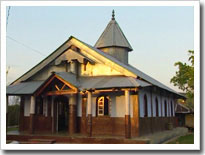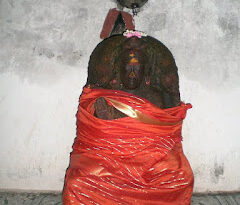Nartiang Durga Temple – Meghalaya (Seven Sister State – 5)
Nartiang is a beautiful place in the Jaintia Hills district of Meghalaya. This place is called the Garden of Monoliths since, the place has several scattered monoliths (stone pillars). This place was the summer capital of the Jaintia kings.
In this city, an ancient (about 500 years old) Durga temple exists. This temple is part of the Shakti Peethams. It is said that Sati’s left thigh fell at this place. This temple was built in the 16th century under the Jaintia regime.
Main Diety – Like any other Shakti temple, the main diety here is the Goddess Durga. There is a Shiva temple nearby too.
History -The father of Goddess Parvati, Daksha did not invite Lord Shiva, his son-in-law to a special Yajna. Parvati felt very humiliated at the insult of her husband and jumped into the yajna fire. Lord Shiva became furious and carried the burning body performing the dance of destruction (Tandava). Lord Vishnu cut down Durga’s dead body into pieces with his Chakra. These pieces fell in various parts of the world that later developed into temples(Shakti Peethams). At Nartiang in the Jaintia Hills, it is believed that the left thigh of Goddess Durga fell. hence, locally Goddess is known as ‘Jainteshwari’.
Another story states that the Jaintia king Jaso Manik was married to the daughter of the Hindu Koch king Nara Narayana. His wife was named Lakshmi Narayana. This Hindu-Jaintia marriage caused the Jaintia royal family to accept Hinduism. It said that the Goddess had appeared in Jaso Manik’s dreams and told him to erect a temple.
Architecture – The temple is situated on top of a hill. From the temple on can see the river Myundu flowing from below. In the basement, the temple houses the “Boli Garbha” or the ritual sacrificial pier. This place is connected to the river by a tunnel.
The temple overlooks the monoliths. originally the temple resembled a thatched roof house, which is similar to most of the houses of the Khasi people. Later on Ramkrishna mission took over the redevelopment of this temple at it got a tin roof and a more permanent structure.
Specialties – The temple has the ancient guns of the earlier kings.
Human sacrifice was prevalent till the 19th century. It is believed that the head rolled off into the river through the tunnel. This has now ended and instead a goat is sacrificed wearing a human mask.
Present descendant of the Jaintia family and the main patron of this temple is called as “Syiem”.
The worship is different from normal Vedic rituals and is a mix of Hindu and ancient Khasi traditions
The Monoliths are Menhirs (the upright stones) locally known as Moo Shynrang (Men) and Dolmens (the flat horizontal stones) known as Moo Kynthai (Women). Some of these were erected in the 1500 AD.The tallest Menhir is known as Moo Long Syiem. It is 8 metres high and 18 inches thick. It was named after U Mar Phalyngki a great warrior and Jaintia lieutenant.
The priest of this temple belong to the same family. Priesthood is passed on from generation to generation
Festivals and Prayers – Durga Puja is the biggest festival here. The entire temple is decked with fresh marigold flowers and the deity is presented with new clothes. In the Khasi custom (of the Jaintiya people) it is not necessary to worship only idols of the Goddess. The utsav murti or ceremonious idol, is made up of a banana tree trunk and is then immersed in the Myundi river for Visarjan after Puja.
How to reach – Nartiang is around 65 kilometers from Shillong towards the East.
Address: Nartiang Village, Jowai, India
Nearby Places –
1. The monoliths at the Market center
2. Sahmai Mandir
3. Thadlaskein Lake
Image Courtesy – megtourism.gov.in/dest-jaintia.html


